Prince Sultan bin Salman, president of the Saudi Commission for Tourism and Antiquities (SCTA), said on Tuesday that there were 33 million domestic flights for local tourists in 2012, providing 1.126 million direct and indirect jobs in this sector.
Prince Sultan was speaking at the high-profile World Tourism Organization (UNWTO) and the World Travel Market (WTM) summit in London in which delegates from 149 countries, including Saudi Arabia, participated.
Prince Sultan also attended the 5th G-20 Tourism Ministerial Meeting held in London.
During a panel discussion entitled “How to bridge the gap between tourism and aviation” held at the ExCel Exhibitions Center in London, Prince Sultan told participants that the Kingdom had seen a dramatic increase in domestic tourism.
Citing statistics made available through the SCTA, he said there were 18.6 million tourist departures and 14.3 million arrival flights, including 7.2 Haj and Umrah trips.
Together, he said, they make Saudi Arabia an attractive destination for a large number of international carriers.
He said this had resulted in providing 1.126 million jobs in the tourism sector, including 751,000 direct jobs with the presence of Saudis going up from 10 percent in 2000 to 27 percent in 2013.
There are around 219,000 employees in the aviation sector, besides 139,000 jobs associated with aviation activities created indirectly in the tourism sector.
Prince Sultan also dwelt on the growing economic importance of the Kingdom and its position as an important hub in the global economy.
A hub of religious and cultural importance, Saudi Arabia had advanced facilities in terms of economic development, infrastructure and human development, he said.
He said Saudi Arabia’s tourism market had witnessed remarkable growth in terms of local tourists. The Kingdom is focused on developing the tourism sector, he said, as it plays an important role in stimulating the national economy and creating job opportunities for citizens.
Prince Sultan revealed that the STCA has worked to develop and implement a national plan for the development of tourism in the Kingdom and increase competition. The STCA has created tourist sites for investment, he said.
He pointed out that the General Authority for Civil Aviation (GACA) in the Kingdom had increased the number of flights by providing licensing to new airlines, in addition to opening regional airports for domestic and international flights.
He said the Kingdom was currently working on increasing the capacity of airports to accommodate growing demand in this sector.
Saudi domestic tourism flights touch 33 million
Saudi domestic tourism flights touch 33 million

Al-Baha almond season flourishes with vibrant blooms

AL-BAHA: Saudi Arabia's southwestern region of Al-Baha transforms into a stunning landscape in winter, with gardens and parks adorned in shades of white and pink blossoms of almond trees.
This year, the almond blossom season in the region is remarkable amid ideal weather conditions fostering dense, vibrant flowers. Local farmers are optimistic about the upcoming harvest, carefully tending to the trees to ensure optimal yield.

Almond cultivation is a longstanding tradition in Al-Baha, playing a vital role in the local economy by creating job opportunities for farmers and promoting agricultural trade. The exquisite almond blossoms also attract tourists, advancing the growth of ecotourism in the region.
The cultivation of almond trees is prevalent throughout the Sarawat Mountains in Al-Baha, as well as in the governorates of Baljurashi, Al Mandaq, and Bani Hassan.
READ MORE: Saudis are still nuts about almonds amid revival in cultivation
A single almond tree can yield about 200 kilograms of nuts each season, farmers say.
The Ministry of Environment, Water and Agriculture branch in Al-Baha has been instrumental in promoting almond tree cultivation by introducing investment opportunities and enhancing farmers' expertise through a range of informative workshops.
Qaisariya Souq: Historic market in the heart of Al-Ahsa

- Dating back to 1822, the 7,000-square-meter souq plays a vital economic role, reflecting Al-Ahsa's historical, cultural, and economic significance, alongside other heritage sites
DAMMAM: Al-Qaisariya Souq, renowned for its historic architecture, narrow covered walkways, and diverse shops, remains a beloved destination for shoppers and heritage enthusiasts, standing as one of the most famous traditional markets in the Arabian Peninsula and a prominent landmark.
Located in central Hofuf in Al-Ahsa Governorate, the market draws residents from across the region and Gulf countries, as well as tourists from around the world, attracted by its unique atmosphere and cultural significance.
The United Nations Educational, Scientific, and Cultural Organization (UNESCO) has recognized its importance by including the market on its World Heritage List in 2018.

Dating back to 1822, the 7,000-square-meter souq features 14 gates and over 422 shops along open-air corridors. Its shops are adorned with carved wooden doors, the walkways are illuminated by lanterns, and the ceiling is crafted from stained wood, while vendors display their wares outside their shops.
Visitors can find a wide variety of products, including clothing, fabrics, abayas, handbags, food, utensils, gold, and handicrafts.
Al-Qaisariya Souq plays a vital economic role, reflecting Al-Ahsa's historical, cultural, and economic significance, alongside other heritage sites like ancient neighborhoods, palaces, towers, mosques, and other traditional markets.

King Faisal Prize announces winners for 2025

- KSU professors, Canadian and Japanese scientists achieving breakthroughs in cellular therapy and carbon nanotubes win coveted prize
- Selection committees held meetings at King Faisal Prize headquarters to select winners in Islamic studies, Arabic language and literature, medicine, and science
RIYADH: The King Faisal Prize 2025 laureates were announced at a ceremony in Riyadh on Wednesday night.
Two King Saud University professors, a Canadian scientist who achieved a breakthrough in cellular therapy and a Japanese scientist doing pioneering work in carbon nanotubes were winners of the most coveted prize in the Arab world.
Announcing the KFP 2025 winners, Dr. Abdulaziz Alsebail, secretary-general of the King Faisal Prize said: “The selection committees of the King Faisal Prize 2025, after meticulous deliberations that were held from Monday to Wednesday, have reached decisions for the prize’s four categories: Islamic studies, Arabic language and literature, medicine, and science. As for the fifth category, the King Faisal Prize for Service to Islam, the announcement will be made at the end of this month.”
The King Faisal Prize for Islamic Studies for 2025 (Topic: Studies of Archaeology in the Arabian Peninsula), was awarded jointly to Professor Saad Abdulaziz Alrashid and Professor Said Faiz Alsaid. Both are Saudi nationals and professors at King Saud University.
Alrashid was awarded the prize for his contribution to the study of Islamic archaeological sites and inscriptions of the Arabian Peninsula, which laid the scientific and methodological groundwork for scholars in this field.
His work has enriched scientific knowledge about Islamic civilization and has become an empirical source for future generations of researchers.
Alsaid was awarded the prize for the originality of his scientific studies, which are based on rich literature and published in several languages. His adaptation of a comparative methodology in studies of inscriptions and ancient writings of the Arabian Peninsula has had a profound impact on understanding the history of the Arabian Peninsula’s civilizations before Islam.
His studies are an important scientific reference for scholars of the history of the Arabian Peninsula and the ancient Near East.
The King Faisal Prize for Arabic Language and Literature (Topic: Studies of Identity in Arabic Literature), was withheld due to the nominated works not reaching the criteria for the prize.
The King Faisal Prize for Medicine (Topic: Cellular Therapy), has been awarded to Michel Sadelain (Canada), Stephen and Barbara Friedman chair and director, Center for Cell Engineering at Memorial Sloan Kettering Cancer Center.
Sadelain has been awarded the prize for his pioneering work in cellular therapy, and in particular for the genetic engineering of immune cells with “chimeric antigen receptors” (CAR-T).
Dr. Sadelain led the team that designed and tested clinically effective and novel CAR-T agents for the treatment of blood cancers.
His group identified CD19 as an effective CAR target and included a CD28 domain in the CAR construct, resulting in strikingly effective clinical responses.
Dr. Sadelain continues to improve CAR-T cell efficacy by devising strategies to overcome treatment resistance. This approach also shows promise in the treatment of autoimmune diseases and solid tumors.
The King Faisal Prize for Science for this year was awarded in physics to Sumio Iijima, a
professor at Meijo University, Japan.
Iijima has been awarded the prize for establishing the field of carbon nanotubes, following his pioneering discovery of carbon nanotubes using electron microscopy. This new class of one-dimensional carbon materials has had a powerful impact on fundamental solid-state physics and material science.
His work has opened new avenues for developing wide-ranging, practical applications in nanotechnology, ranging from electronics to energy storage systems and biomedicine.
The General Secretariat of the King Faisal Prize commended the 2025 laureates and offered thanks to the distinguished members of the selection committees and the experts for their valued contributions.
The selection committees for the prize’s four categories — Islamic studies, Arabic language and literature, medicine, and science — convened at the prize’s headquarters from Monday to Wednesday.
The selection committees included prominent experts, scholars and specialists from 16 countries.
The KFP was established in 1977, and was awarded for the first time in 1979 in three categories — service to Islam, Islamic studies, and Arabic language and literature. Two additional categories were introduced in 1981 — medicine and science. The first medicine prize was awarded in 1982, and in science two years later.
Since 1979, the KFP in its different categories has awarded about 300 laureates to those who have made distinguished contributions to different sciences and causes.
Each prize laureate is endowed with $200,000, a 24-carat gold medal weighing 200 grams, and a certificate inscribed with the laureate’s name and a summary of the work that qualified them for the prize.
Warning of thunderstorms and flash floods in Saudi Arabia for next 4 days

RIYADH: Residents of Saudi Arabia were warned on Wednesday that the country could be hit by thunderstorms and flash floods between now and Sunday.
The General Directorate of Civil Defense advised people to remain sheltered and stay away from canyons.
Many regions can expect medium-to-heavy rain, hail or strong gusts of wind, with a high risk of flooding. Forecasters predict Riyadh, Jeddah, Al-Baha, Asir and Jazan will be among the affected regions, the Saudi Press Agency reported.
Riyadh’s literary havens: Where coffee meets the love of books

- City’s book cafes offer serene spaces for quiet reflection
- Carefully curated selections of Arabic and English titles on offer
RIYADH: Riyadh’s cultural landscape is undergoing a quiet transformation, where the love of coffee meets the timeless allure of literature.
Book cafes are carving out a niche as spaces where readers, thinkers, and coffee enthusiasts converge.
These havens of creativity and reflection offer retreats for the mind and soul, providing a sense of community in an increasingly fast-paced world.

The Book Club: Where stories find their home
Nestled in the Al-Yasmin district, The Book Club is a tranquil retreat for bibliophiles, particularly those passionate about Arabic literature.
Its shelves brim with carefully curated Arabic titles, from classics to contemporary gems, complemented by a modest selection of English books.
HIGHLIGHTS
• In Riyadh’s Al-Narjis district, Wathbah Coffee and Book’s floor-to-ceiling bookshelves, vintage-inspired decor, and intimate corners create a haven for readers and thinkers alike.
• Coffee Trees, tucked away in the Al-Rayan district, offers a sanctuary that blends greenery with literary charm.
The minimalist interior, adorned with soft lighting and intimate reading nooks, creates an atmosphere conducive to focus and relaxation.
What sets The Book Club apart is its browsing policy. Visitors are welcome to skim books for three minutes before deciding to purchase, with additional purchases granting extended reading time.
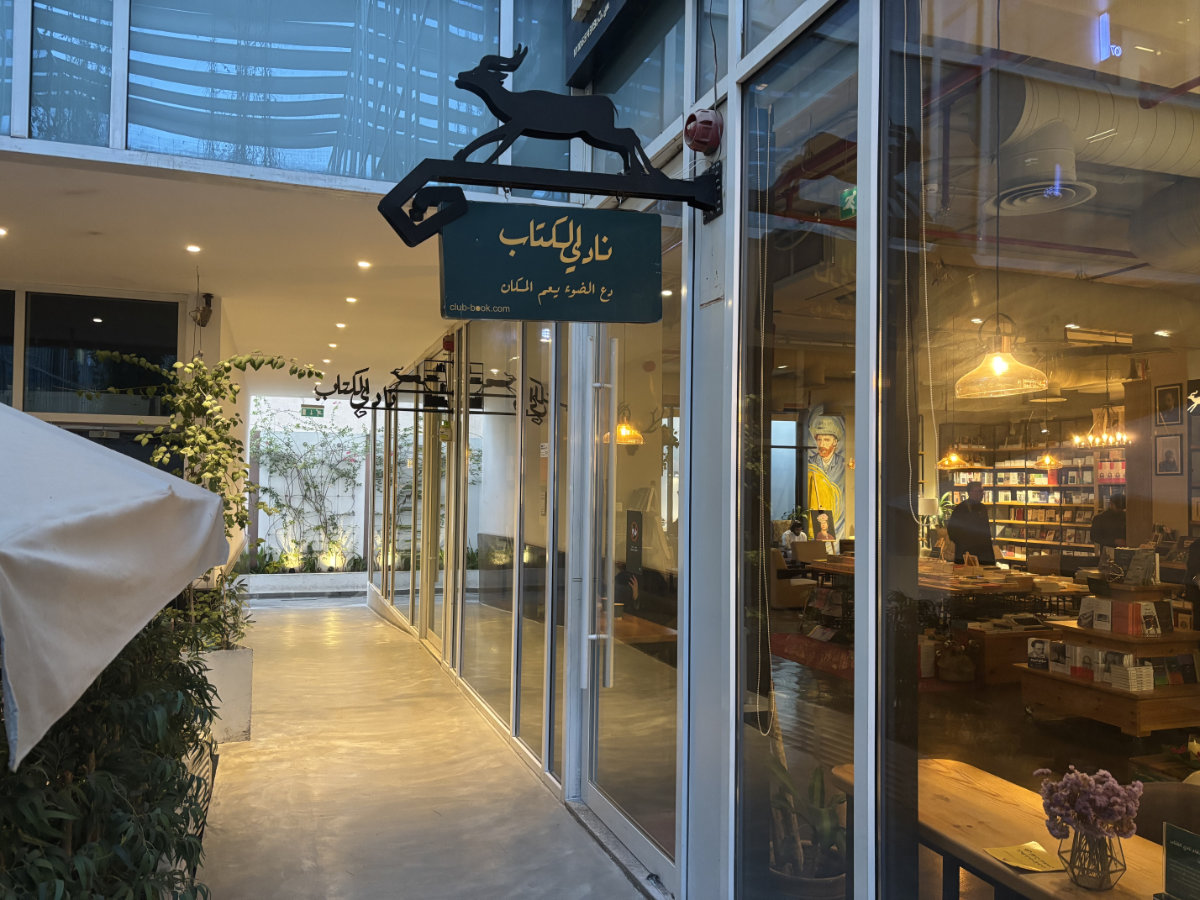
During Arab News’ visit, the cafe hosted a stimulating talk with Saad Al-Bazai, titled, “Historical Fiction: Why Do They Believe in the Imagined?”
Al-Bazai told Arab News: “These gatherings bring together a diverse audience and provide them with the opportunity to meet researchers.
“This undoubtedly supports cultural life as it creates a platform for dialogue that differs from social media platforms — it is vibrant, direct, and involves personal presence.”
Sophia: A library, a cafe, and a place to connect
Sophia has become a cornerstone of Riyadh’s literary scene, acting as a hub for knowledge, creativity, and meaningful connections.
Its towering wooden shelves are filled with a rich collection of Arabic and English books, carefully curated to cater to a diverse audience.
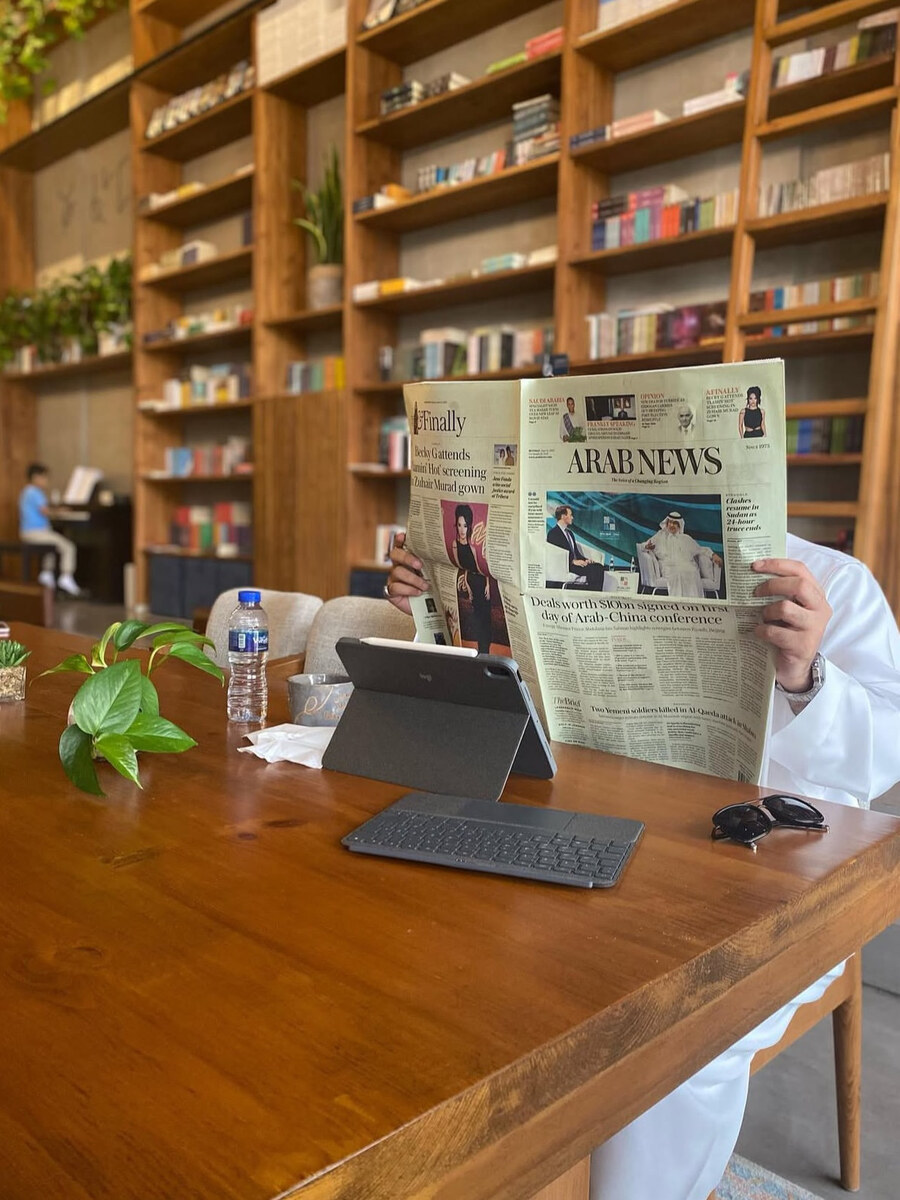
Beyond being a library, Sophia also serves as a publishing house, amplifying the voices of local and regional authors, bringing their stories to the forefront.
What sets Sophia apart is its dedication to fostering intellectual growth and cultural exchange.
The space regularly hosts book launches, discussion panels, and thought-provoking dialogue sessions that bring together writers, readers, and thinkers from various backgrounds.
The inviting ambiance, complete with warm lighting and cozy seating, creates the perfect backdrop for these events, making each visit an enriching experience.
Aminah Al-Hassani, a loyal visitor, captured the essence of Sophia. She said: “The place is calm and serene, and it has never let me down with a bad book.
“Every book I’ve read here has been better than the last. Their selections are beautiful, and the events they organize are always beneficial and enjoyable.”

Coffee Trees: A green sanctuary
Coffee Trees, tucked away in the Al-Rayan district, offers a sanctuary that blends greenery with literary charm. The cafe’s lush decor, accentuated by vibrant plants and natural elements, transforms the space into a botanical retreat.
Though its library is modest, the curated selection of books is perfectly aligned with the cafe’s serene ambiance.
Patrons often find themselves lost in thought or pages, surrounded by the aroma of ethically sourced, expertly brewed coffee.
Whether it’s the tranquil environment or the commitment to sustainability, Coffee Trees is a favorite escape for those seeking a moment of calm in the city.
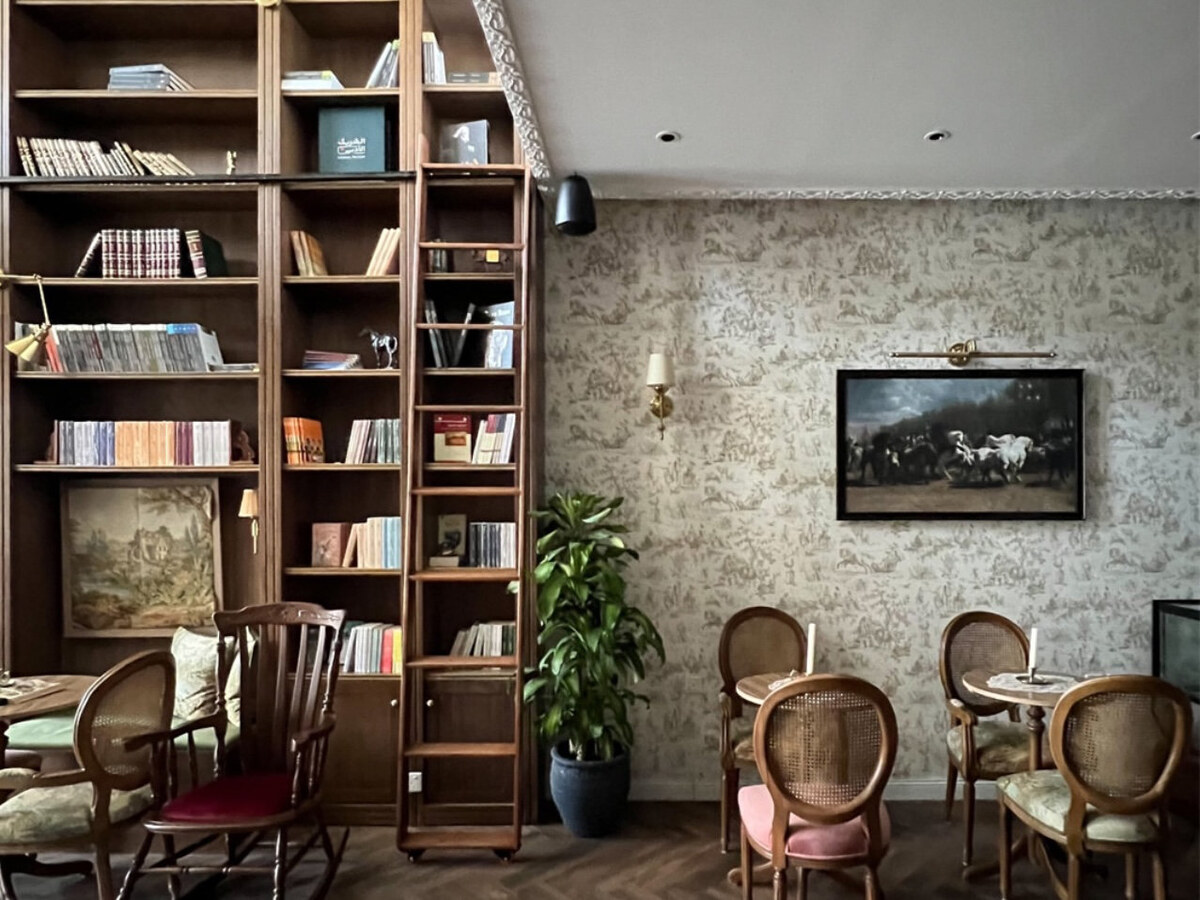
Wathbah Coffee & Book: Where timeless charm meets literature
In Al-Narjis district, Wathbah Coffee & Book exudes intellectual allure. Its floor-to-ceiling bookshelves, vintage-inspired decor, and intimate corners create a haven for readers and thinkers alike.
The carefully selected collection spans genres and eras, ensuring there’s something for everyone.
Wathbah’s ambiance is perfect for quiet reading, reflective conversations, or simply soaking in its aesthetic beauty.
As Sara Al-Ebraheem, a loyal patron, said: “There’s a certain magic in time spent in the company of good books, with a perfectly brewed coffee.”
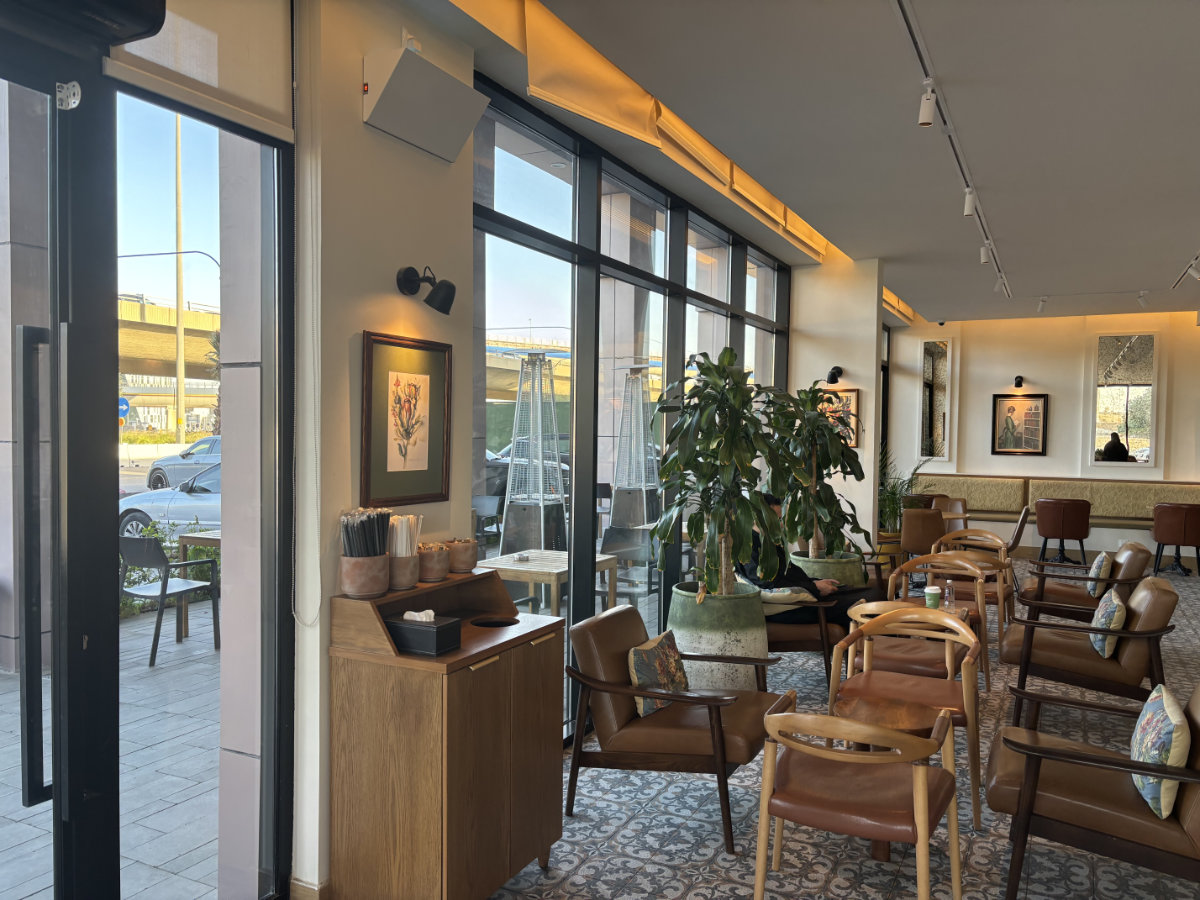
Ons Coffee Roasters: Where simplicity meets serenity
Ons Coffee Roasters offers a minimalist haven for those who crave peace and simplicity. Its clean design, complemented by tasteful art and cozy seating, creates a calm environment perfect for unwinding.
While its library may be small, the books displayed are thoughtfully chosen to inspire reflection and curiosity.
Ons Coffee Roasters is as much about quality as it is about serenity. Its expertly brewed coffee elevates the experience, making it an ideal retreat for anyone seeking a quiet corner in Riyadh.
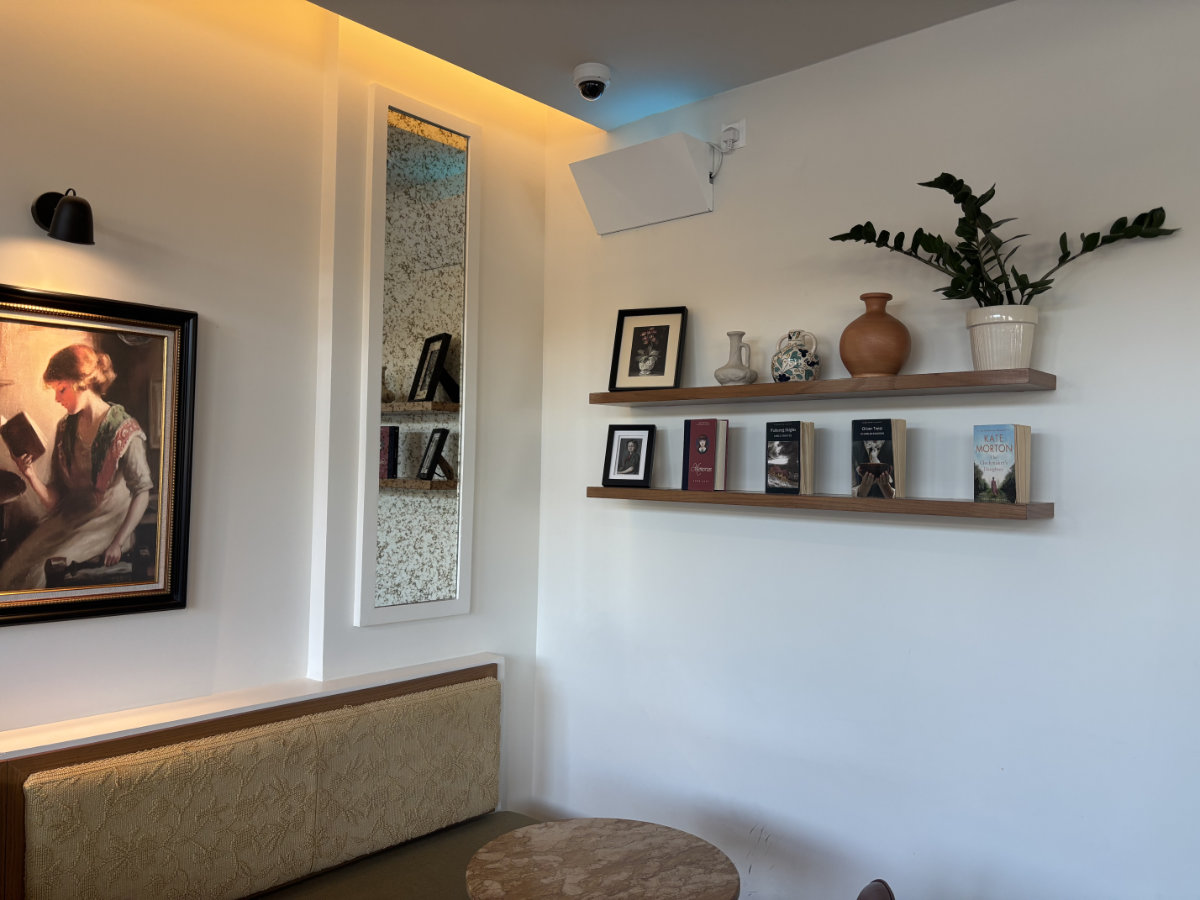
A cultural renaissance in Riyadh
The emerging popularity of book cafes is providing spaces where literature, art, and community thrive. The cafes cater to a growing audience of residents and visitors who value meaningful connections in an increasingly digital world.


















